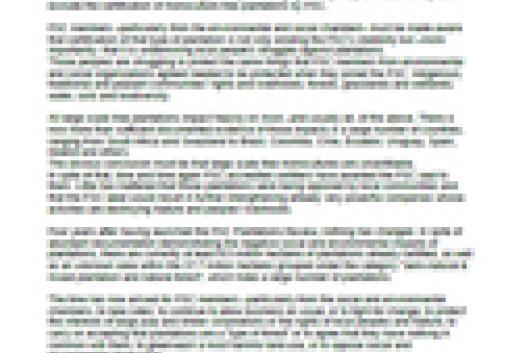By the WRM
The CBD recognized in 1992 the “vital role of women in the conservation and sustainable use of biological diversity” and affirmed “the need for the full participation of women at all levels of policy-making and implementation for biological diversity conservation” (Preamble; paragraph 13).
In spite of that, women have remained as invisible as ever within the deliberations of the CBD’s conferences of the parties.
It needs to be stressed that the issue of women in forests is not limited to their “vital role” in their conservation, but also to the vital role that forests play in relation to women’s livelihoods. Deforestation and forest degradation affect all members of forest dependent communities, but at the same time result in differentiated gender impacts, where women suffer the most.
There is more than sufficient evidence on those impacts on women (1) , which means that they clearly need to play a “vital role” in protecting the biodiversity they depend on. However, their “full participation” has not been ensured and women continue being an invisible actor in the CBD.
Another issue that remains invisible –having strong negative impacts particularly on women- is that of monoculture tree plantations. These are usually invisibilized under the term “all types of forests”, which –in CBD language- includes both “natural” and so-called “planted forests”. Whenever a delegate insists on including in the text the term “all types of forests” instead of simply “forests”, the reason is that his/her government wishes to hide its monoculture tree plantations (“planted forests”) under it.
Those tree monocultures have been adequately defined by local communities as “green deserts”, “dead forests”, “green cancer”, “planted soldiers” and similar terms, which clearly show that they have nothing in common with forests, except for the presence of trees. The many –and well documented- social and environmental impacts of plantations, include their differentiated gender impacts and those affecting local biodiversity. Here again, women are the ones who suffer the most (2).
But until now, both the impacts of plantations on biodiversity and their differentiated impacts on women have remained invisible within the CBD.
In order to comply with its mandate –the conservation of biodiversity- the CBD should strongly oppose the substitution of biodiversity-rich forests with biodiversity-poor tree monocrops. As a starting point for making this possible, it should explicitly exclude monoculture tree plantations from the term “all types of forests”.
The invisibility of women and plantations within the CBD must cease.
Women need to become very visible within the CBD. The convention is mandated to ensure “the full participation of women at all levels of policy-making and implementation for biological diversity conservation”. The conference of the parties must therefore comply with this commitment.
For the opposite reason, plantations also need to be made very visible at CBD. The convention is mandated to ensure the conservation of biological diversity. The conversion of forests and other native ecosystems to large scale tree monocultures destroys biodiversity and the conference of the parties must therefore oppose their spread.
1 - World Rainforest Movement.- "Women, forests and plantations: the gender dimension". WRM, 2005
http://www.wrm.org.uy/subjects/women/text.html
2 - Barcellos, Gilsa and Ferreira, Simone.- "Women and Eucalyptus: Stories of Life and Resistance". WRM, 2007 http://www.wrm.org.uy/countries/Brazil/Book_Women.html
